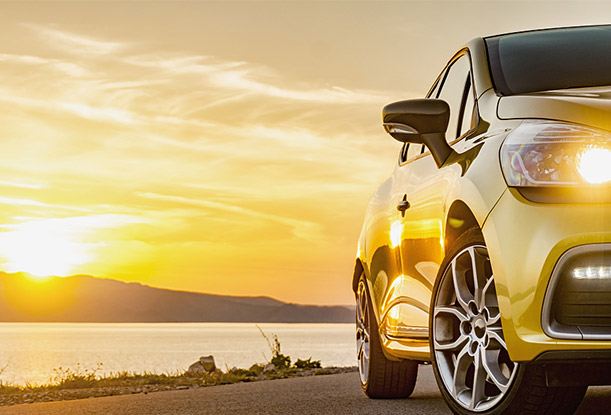
-
 Afrikaans
Afrikaans -
 Albanian
Albanian -
 Amharic
Amharic -
 Arabic
Arabic -
 Armenian
Armenian -
 Azerbaijani
Azerbaijani -
 Basque
Basque -
 Belarusian
Belarusian -
 Bengali
Bengali -
 Bosnian
Bosnian -
 Bulgarian
Bulgarian -
 Catalan
Catalan -
 Cebuano
Cebuano -
 Corsican
Corsican -
 Croatian
Croatian -
 Czech
Czech -
 Danish
Danish -
 Dutch
Dutch -
 English
English -
 Esperanto
Esperanto -
 Estonian
Estonian -
 Finnish
Finnish -
 French
French -
 Frisian
Frisian -
 Galician
Galician -
 Georgian
Georgian -
 German
German -
 Greek
Greek -
 Gujarati
Gujarati -
 Haitian Creole
Haitian Creole -
 hausa
hausa -
 hawaiian
hawaiian -
 Hebrew
Hebrew -
 Hindi
Hindi -
 Miao
Miao -
 Hungarian
Hungarian -
 Icelandic
Icelandic -
 igbo
igbo -
 Indonesian
Indonesian -
 irish
irish -
 Italian
Italian -
 Japanese
Japanese -
 Javanese
Javanese -
 Kannada
Kannada -
 kazakh
kazakh -
 Khmer
Khmer -
 Rwandese
Rwandese -
 Korean
Korean -
 Kurdish
Kurdish -
 Kyrgyz
Kyrgyz -
 Lao
Lao -
 Latin
Latin -
 Latvian
Latvian -
 Lithuanian
Lithuanian -
 Luxembourgish
Luxembourgish -
 Macedonian
Macedonian -
 Malgashi
Malgashi -
 Malay
Malay -
 Malayalam
Malayalam -
 Maltese
Maltese -
 Maori
Maori -
 Marathi
Marathi -
 Mongolian
Mongolian -
 Myanmar
Myanmar -
 Nepali
Nepali -
 Norwegian
Norwegian -
 Norwegian
Norwegian -
 Occitan
Occitan -
 Pashto
Pashto -
 Persian
Persian -
 Polish
Polish -
 Portuguese
Portuguese -
 Punjabi
Punjabi -
 Romanian
Romanian -
 Russian
Russian -
 Samoan
Samoan -
 Scottish Gaelic
Scottish Gaelic -
 Serbian
Serbian -
 Sesotho
Sesotho -
 Shona
Shona -
 Sindhi
Sindhi -
 Sinhala
Sinhala -
 Slovak
Slovak -
 Slovenian
Slovenian -
 Somali
Somali -
 Spanish
Spanish -
 Sundanese
Sundanese -
 Swahili
Swahili -
 Swedish
Swedish -
 Tagalog
Tagalog -
 Tajik
Tajik -
 Tamil
Tamil -
 Tatar
Tatar -
 Telugu
Telugu -
 Thai
Thai -
 Turkish
Turkish -
 Turkmen
Turkmen -
 Ukrainian
Ukrainian -
 Urdu
Urdu -
 Uighur
Uighur -
 Uzbek
Uzbek -
 Vietnamese
Vietnamese -
 Welsh
Welsh -
 Bantu
Bantu -
 Yiddish
Yiddish -
 Yoruba
Yoruba -
 Zulu
Zulu
Upgrading Rear Drum Brakes to Disc Brakes for Improved Performance and Safety
Converting Rear Drum Brakes to Disk Brakes A Comprehensive Guide
When it comes to improving the braking performance of your vehicle, one of the significant upgrades you can consider is converting rear drum brakes to disc brakes. While drum brakes have been a standard feature for many years, disc brakes offer superior performance, including better heat dissipation, quicker response times, and enhanced stopping power. This article will explore the benefits of this conversion, the steps involved, and some important considerations to keep in mind.
Benefits of Converting to Disc Brakes
1. Improved Performance Disc brakes are generally more effective than drum brakes. They provide better stopping power, especially under high-speed or heavy-load conditions. This increased performance is primarily due to their ability to dissipate heat more effectively, reducing the risk of brake fade.
2. Maintenance Drum brakes can be more complicated to service and maintain. Regular maintenance often involves removing the entire assembly, which can be labor-intensive. Conversely, disc brakes are typically easier to inspect and replace, which can save time and money in the long run.
3. Aesthetic Appeal Many car enthusiasts prefer the look of disc brakes. Although this is subjective, the visibility of a disc brake assembly can enhance the overall appearance of modified or high-performance vehicles.
4. Safety For vehicles that are used for towing, racing, or heavy-duty applications, upgraded braking systems can significantly enhance safety. The increased stopping power that disc brakes provide can make a noticeable difference in critical situations.
Steps for Conversion
1. Identify Compatibility Before starting the conversion, you need to ensure that your vehicle's chassis can accommodate disc brakes. Check the specifications for your vehicle and determine if aftermarket kits are available.
convert rear drum brakes to disk

2. Gather Required Parts You will need several components for the conversion, including - Disc rotors - Calipers and brake pads - Caliper brackets and mounting hardware - Hoses and lines (as disc brakes usually require different plumbing) - A new master cylinder, if necessary, to accommodate the difference in fluid displacement.
3. Remove Old Drum Brakes Safely lift and secure your vehicle. Remove the wheel and tire assembly, then take off the drum brake setup, including shoes, springs, and the backing plate.
4. Install Disc Brake Components Begin by installing the new caliper bracket according to the manufacturer's instructions. Attach the disc rotors to the hub, ensuring all fasteners are torqued to the specifications. Finally, install the calipers, ensuring they are positioned correctly for optimal pad contact.
5. Connect Brake Lines If you are using different hoses, replace the existing drum brake lines with the new ones, ensuring no leaks. Bleed the brakes using the appropriate method to remove any air from the lines.
6. Test the System Before taking your vehicle out on the road, it is crucial to test the new braking system. Make sure everything is functioning correctly and that there are no leaks or unusual noises.
Important Considerations
While converting rear drum brakes to disc brakes can be beneficial, it’s essential to consider a few factors. Ensure your vehicle is equipped with an appropriate braking system that matches the performance capabilities of the new disc brakes. Additionally, a proper balance between front and rear brakes is crucial for effective braking performance and safety.
In conclusion, converting rear drum brakes to disc brakes can enhance your vehicle's safety, performance, and aesthetic appeal. While the conversion process requires careful planning and execution, the rewards in driving experience and safety can be well worth the effort. Always consider consulting with a professional mechanic or automotive specialist to ensure you have the right parts and knowledge to complete the conversion successfully.
-
Safety Features of Red Brake DrumsNewsAug.01,2025
-
Rear Drum Brakes Replacement for Older VehiclesNewsAug.01,2025
-
Professional Brake Drum Turning Services ExplainedNewsAug.01,2025
-
How Brake Drum and Rotor Puller WorksNewsAug.01,2025
-
Brakes and Drums CompatibilityNewsAug.01,2025
-
Anticipate Failures in Brake Drum MotorNewsAug.01,2025
-
What Are Drum BrakesNewsJul.07,2025
